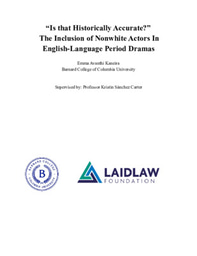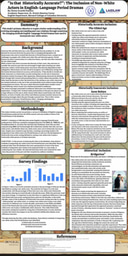LIA Second Summer: Understanding the Historical Record
One of the most important aspects of the Unstable Archives Project's work is providing historical context Elizabeth Sharaf un-Nisa and Gerard Ducarel's relationship. This can prove to be a difficult task at times, as interracial relationships between native women and European men during the 18th and 19th centuries were often left unformalized. Furthermore it was not uncommon for Englishmen who already had English wives and families to take native companions while in South Asia, leading to their English families actively suppressing knowledge of these relationships. Put together, this results in the paper trail of these relationships being nearly nonexistent, with many of them only acknowledged in wills or baptism records. Scholarship on this topic is often limited to mentions in larger works, with Durba Ghosh's Sex and the Colonial Family being one of the few comprehensive English language works on the subject.
As such, my first objective was to comb through Ghosh's citations, looking for references to secondary and primary sources containing information on native wives. Once I had finished with that, I went through all of the sources I had collected, creating summaries detailing the information they had on the topic and finding secondary and primary sources they referenced back to. At the end of this process, I had created a list of all of the secondary sources I found, as well as a more selective annotated list of resources that I found specially relevant to the topic. These lists are both intended to serve as a base for future pedagogy and scholarship on the topic by placing all of the scattered resources into one place.
Completing this process made me realize the extent to which our understanding of the past relies on written documentation. Most of what we know about these interracial relationships comes from mentions of native women within wills being left property, or within court cases. Oftentimes the only record of many of these women comes from the existence of their mixed race children, which serves as a record of their existence but offers little information as to who they were, or what their lives were like.
More than anything, the discovery of Elizabeth Sharaf un-Nisa and Gerard Ducarel's relationship points out the gaping holes in our understanding of these relationships. The discovery of the artifacts detailing their relationship opens up the possibility of more interracial relationships that were legitimized within English law. Marriage and assimilation into English culture might have been a more common path for native companions than previously thought.


Please sign in
If you are a registered user on Laidlaw Scholars Network, please sign in